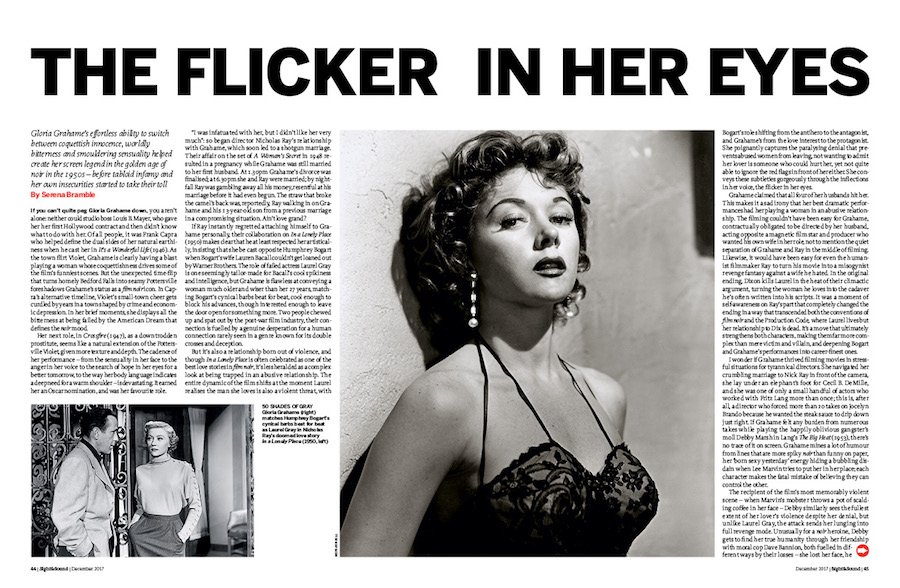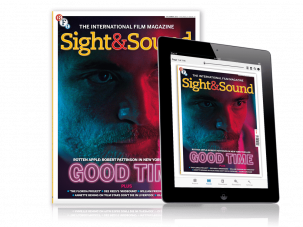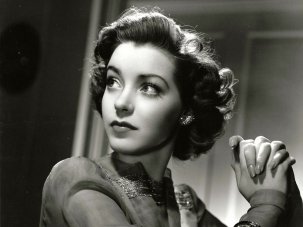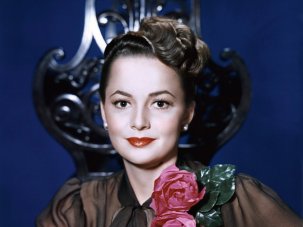If you can’t quite peg Gloria Grahame down, you aren’t alone: neither could studio boss Louis B. Mayer, who gave her her first Hollywood contract and then didn’t know what to do with her. Of all people, it was Frank Capra who helped define the dual sides of her natural earthiness when he cast her in It’s a Wonderful Life (1946). As the town flirt Violet, Grahame is clearly having a blast playing a woman whose coquettishness drives some of the film’s funniest scenes. But the unexpected time-flip that turns homely Bedford Falls into seamy Pottersville foreshadows Grahame’s status as a film noir icon. In Capra’s alternative timeline, Violet’s small-town cheer gets curdled by years in a town shaped by crime and economic depression. In her brief moments, she displays all the bitterness at being failed by the American Dream that defines the noir mood.
Film Stars Don’t Die in Liverpool is now on UK release.
In a Lonely Place and The Big Heat are re-released in UK cinemas on 24 November.
Good at Being Bad: the films of Gloria Grahame runs 13 November–30 December at BFI Southbank, London.
Her next role, in Crossfire (1947), as a downtrodden prostitute, seems like a natural extension of the Pottersville Violet, given more texture and depth. The cadence of her performance – from the sensuality in her face to the anger in her voice to the search of hope in her eyes for a better tomorrow, to the way her body language indicates a deep need for a warm shoulder – is devastating. It earned her an Oscar nomination, and was her favourite role.
“I was infatuated with her, but I didn’t like her very much”: so began director Nicholas Ray’s relationship with Grahame, which soon led to a shotgun marriage. Their affair on the set of A Woman’s Secret in 1948 resulted in a pregnancy while Grahame was still married to her first husband. At 1.30pm Grahame’s divorce was finalised; at 6.30pm she and Ray were married; by nightfall Ray was gambling away all his money, resentful at his marriage before it had even begun. The straw that broke the camel’s back was, reportedly, Ray walking in on Grahame and his 13-year-old son from a previous marriage in a compromising situation. Ain’t love grand?
If Ray instantly regretted attaching himself to Grahame personally, their collaboration on In a Lonely Place (1950) makes clear that he at least respected her artistically, insisting that she be cast opposite Humphrey Bogart when Bogart’s wife Lauren Bacall couldn’t get loaned out by Warner Brothers. The role of failed actress Laurel Gray is one seemingly tailor-made for Bacall’s cool spikiness and intelligence, but Grahame is flawless at conveying a woman much older and wiser than her 27 years, matching Bogart’s cynical barbs beat for beat, cool enough to block his advances, though interested enough to leave the door open for something more. Two people chewed up and spat out by the post-war film industry, their connection is fuelled by a genuine desperation for a human connection rarely seen in a genre known for its double crosses and deception.
But it’s also a relationship born out of violence, and though In a Lonely Place is often celebrated as one of the best love stories in film noir, it’s less heralded as a complex look at being trapped in an abusive relationship. The entire dynamic of the film shifts at the moment Laurel realises the man she loves is also a violent threat, with Bogart’s role shifting from the antihero to the antagonist, and Grahame’s from the love interest to the protagonist. She poignantly captures the paralysing denial that prevents abused women from leaving, not wanting to admit her lover is someone who could hurt her, yet not quite able to ignore the red flags in front of her either. She conveys these subtleties gorgeously through the inflections in her voice, the flicker in her eyes.
Grahame claimed that all four of her husbands hit her. This makes it a sad irony that her best dramatic performances had her playing a woman in an abusive relationship. The filming couldn’t have been easy for Grahame, contractually obligated to be directed by her husband, acting opposite a magnetic film star and producer who wanted his own wife in her role, not to mention the quiet separation of Grahame and Ray in the middle of filming.
Likewise, it would have been easy for even the humanist filmmaker Ray to turn his movie into a misogynist revenge fantasy against a wife he hated. In the original ending, Dixon kills Laurel in the heat of their climactic argument, turning the woman he loves into the cadaver he’s often written into his scripts. It was a moment of self-awareness on Ray’s part that completely changed the ending in a way that transcended both the conventions of film noir and the Production Code, where Laurel lives but her relationship to Dix is dead. It’s a move that ultimately strengthens both characters, making them far more complex than mere victim and villain, and deepening Bogart and Grahame’s performances into career-finest ones.
I wonder if Grahame thrived filming movies in stressful situations for tyrannical directors. She navigated her crumbling marriage to Nick Ray in front of the camera, she lay under an elephant’s foot for Cecil B. DeMille, and she was one of only a small handful of actors who worked with Fritz Lang more than once; this is, after all, a director who forced more than 20 takes on Jocelyn Brando because he wanted the steak sauce to drip down just right. If Grahame felt any burden from numerous takes while playing the happily oblivious gangster’s moll Debby Marsh in Lang’s The Big Heat (1953), there’s no trace of it on screen. Grahame mines a lot of humour from lines that are more spiky noir than funny on paper, her ‘born sexy yesterday’ energy hiding a bubbling disdain when Lee Marvin tries to put her in her place; each character makes the fatal mistake of believing they can control the other.
The recipient of the film’s most memorably violent scene – when Marvin’s mobster throws a pot of scalding coffee in her face – Debby similarly sees the fullest extent of her lover’s violence despite her denial, but unlike Laurel Gray, the attack sends her lunging into full revenge mode. Unusually for a noir heroine, Debby gets to find her true humanity through her friendship with moral cop Dave Bannion, both fuelled in different ways by their losses – she lost her face, he lost a wife – to take down a powerful crime syndicate. The film’s best scenes involve Debby subtly making Bannion remember his wife instead of merely compartmentalising her. His investigation may drive the plot forward, but Debby is the heart of The Big Heat, at once the vengeful femme fatale and the saint, sacrificing herself for all the sins Bannion didn’t have the courage to.
The rest of Grahame’s output in her most prolific decade include numerous contributions to film noir that had her falling more easily into the sensual femme fatale archetype, including her second film with Lang, Human Desire (1954). Like most great stars of the golden age, she won an Oscar for one of her less effective performances, as a Southern belle to a Faulkneresque novelist in Vincente Minnelli’s The Bad and the Beautiful (1952). Later she played the girl who couldn’t say no in Oklahoma! (1955).
And then, just as the 50s ended… so did Grahame. She just stopped.
It could have been for any number of reasons: her constant insecurity about her lips resulted in a speech impediment from a number of plastic surgeries; her move to England upon marrying her third husband; or the tabloid infamy she faced when she married her former stepson Tony, the same one Nick Ray had walked in on with her. She never had another great film role after the 50s, popping up instead on TV or in a B horror movie or exploitation film, even gaining a tiny role in Jonathan Demme’s comedy drama about Howard Hughes, Melvin and Howard (1980), where the irony surely wasn’t lost on her that she was still living in the shadow of Hughes, who didn’t do her career any favours during his tenure at RKO.
Even if her career quietly went into the night before her death in 1981, Grahame still left a burn mark on celluloid history. It was a conscious decision for Annette Bening to take notes from The Big Heat when playing a con artist in The Grifters (1990). Bening nails the physicality that made Grahame such an icon, but also her knack for verbally splintering people. Hell, even a dress she wears is a replica of Grahame’s.
Her impression of Grahame in Stephen Frears’s neo-noir is a solid foreshadowing of how she would depict the real McCoy in Film Stars Don’t Die in Liverpool; not a carbon-copy by any physical means, but carefully capturing her girly flirtiness, softening the femme fatale notoriety the press had given her, yet still alluding to the volcano beneath the still waters.
Grahame once said that though she remembered every detail of her Hollywood career, she only wanted to remember the images, not the details. When I think of Grahame, I remember her eyes, the way a few darting glances could size a man up with dazzling intimacy and curiosity, and the slightest raise of her eyebrow could chop down even the most masculine of co-stars. Even when she wasn’t in focus in a shot, her eyes were clearly doing all the listening and thinking where most actresses merely react. That was the essence of Gloria Grahame: poignant, smart and nobody’s fool.
In the December 2017 issue of Sight & Sound

Catch a falling star
Paul McGuigan’s bittersweet love story Film Stars Don’t Die in Liverpool is a warm-hearted portrait of the affair between a young Scouse actor and the one-time queen of noir Gloria Grahame. Here Annette Bening, who plays her in the film, discusses her decades-long preparation for the role. By Will Lawrence.

+ The flicker in her eyes
Gloria Grahame’s effortless ability to switch between coquettish innocence, worldly bitterness and smouldering sensuality helped create her screen legend in the golden age of noir in the 1950s – before tabloid infamy and her own insecurities started to take their toll. By Serena Bramble.
-
Sight & Sound: the December 2017 issue

Robert Pattinson in in the Safdie brothers’ Good Time; plus The Florida Project; Mudbound; Gloria Grahame, Annette Bening and Film Stars Don’t Die...
-
The Digital Edition and Archive quick link
Log in here to your digital edition and archive subscription, take a look at the packages on offer and buy a subscription.









